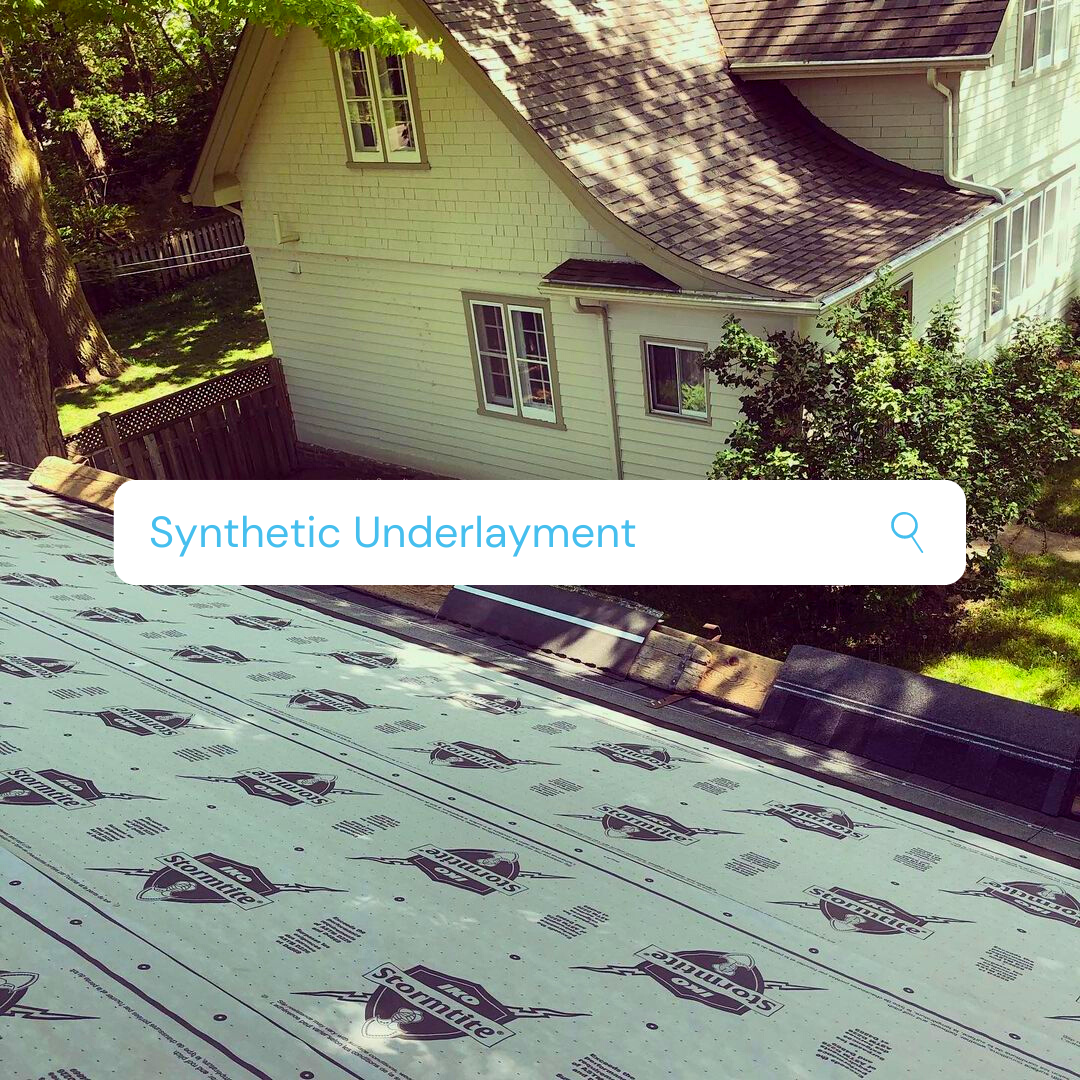
When it comes to getting your roof replaced, shingles alone are not the only product that will be needed to protect your house from the diverse weather conditions. Many roofing manufacturers have provided consumers with a multilayered roofing system. One component that belongs to that roofing system is synthetic underlayment.
Synthetic underlayment is mainly used under asphalt shingles as a part of the installation process. Keep in mind, that it can also be used for a temporary repair, as it contains UV stabilizers which allow for it to be exposed for thirty days or more while retaining its utility. We previously used felt paper underlayment for several decades. We then switched over to synthetic underlayment for the wide range of benefits that it provided to the contractor and the homeowner.
One of the benefits of synthetic underlayment is that it is water-resistant and a vapour-retarder. If any moisture were to get behind the shingles it would reduce the chances of moisture getting inside your home for a bit of time. As mentioned, synthetic underlayment are non-permeable, allowing minimal moisture transfer through the attic and decking.
Another advantage of synthetic underlayment is that it is extremely durable, lightweight, and flexible to work with. When it comes to cutting shingles on top of synthetic underlayment it is less likely to get cut in comparison to felt. As mentioned, synthetic underlayment is flexible and easy to work with; it’s flexible to wrap around vents, flash pipes, chimneys, and dormers. This is important because it makes the job less strenuous which in general leads to a better job done in most cases.
As you can see here, synthetic underlayment provides the homeowner and the contractor with a lot of benefits. Keep in mind, that it is one part of the whole roofing system. When it is time to replace your roof, make sure you inquire about all the roofing components that are offered. Please make sure your roofing contractor provides a complete roofing system ensuring your roof’s optimum performance.
